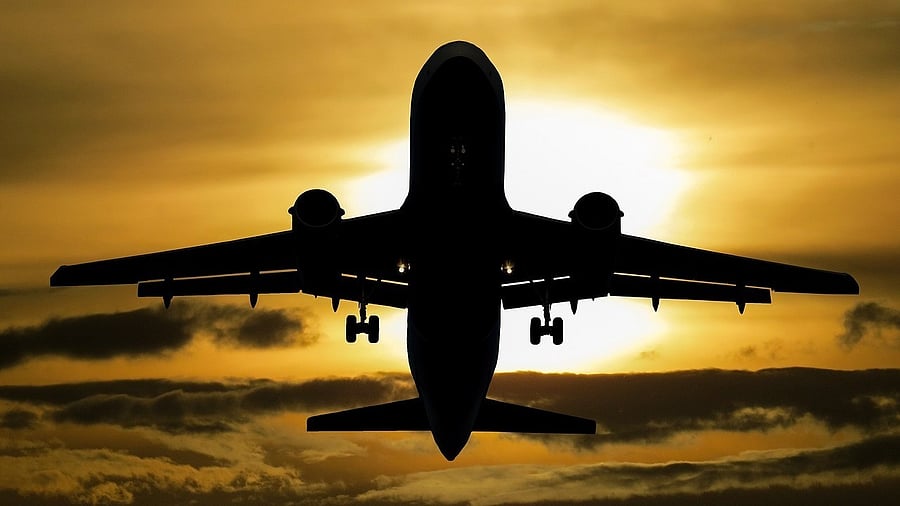
Representative image of an aircraft.
Credit: Pixabay Photo
New Delhi: With the backlog of aircraft orders touching a record high of 17,000 at 2024-end and delivery lagging 30 per cent behind, airline operators are being forced to spend more on maintenance costs and fuel amid average age of aircraft rising from 13 to 15 years.
According to the International Air Transporters Association (IATA), the implied waiting time for aircraft delivery is presently around 14 years due to supply chain constraints and production limitations, which are "likely to be aggravated" by tariffs.
Aircraft deliveries fell by 8 per cent in 2024, when a total of 1,266 aircraft were delivered and this was well below the peak level seen in 2018 at 1,813 even as traffic levels have surpassed those seen in 2018 and 2019. In 2025, 1,692 aircraft are expected to be delivered and it is almost 26 per cent lower than estimates made a year ago although this would mark the highest level since 2018.
With fewer aircraft entering the market, a recent IATA report 'Global Outlook for Air Transport: Protectionism on the Rise' said, leasing rates for older models have risen while the prices for new aircraft on the secondary market are also climbing.
"The average age of aircraft has increased from 13 to 15 years over the past decade, leading to higher maintenance costs and increased average fuel consumption. These factors have stalled the gains in fuel efficiency that the industry has delivered over its entire history. While airlines have replaced 5-6 per cent of their fleets each year historically, this pace has nearly halved since 2020," it said.
Delays in aircraft deliveries complicate short-term capacity planning and can lead to inefficiencies and carriers in some parts of the world are even forced to operate larger aircraft, resulting in empty seats, it said.
"The backlog of aircraft orders reached a record high of 17,000 aircraft as of the end of 2024, compared to a more habitual backlog of between 10,000 and 11,000 in previous years. The current backlog is notable not only in absolute terms but also relative to the size of the fleet. The latter metric has increased from about 40 per cent before 2019 to 57 per cent in 2024," the report said.
"If this backlog increase were assumed to be caused solely by delivery delays, it would indicate that airlines are short of 5,400 aircraft. This implies 15 per cent of the total commercial fleet or almost 20 per cent of the active fleet. Given the expected annual production of around 2,000 aircraft, this may take at least 3-5 years to resolve," it added.
In addition to the delivery delays, it said engine problems and a shortage of spare parts exacerbate the situation and have caused record-high groundings of certain aircraft types.
